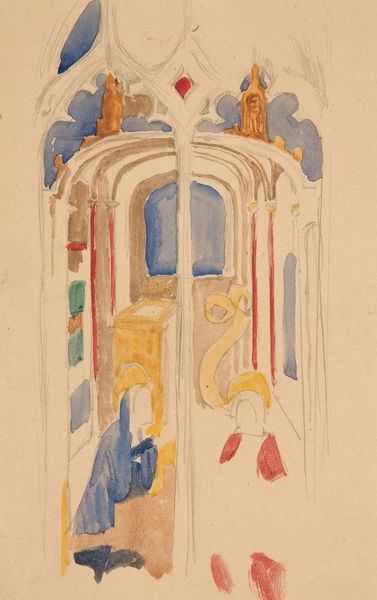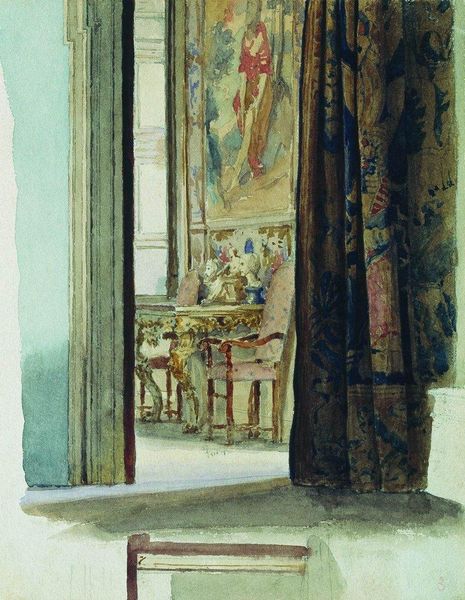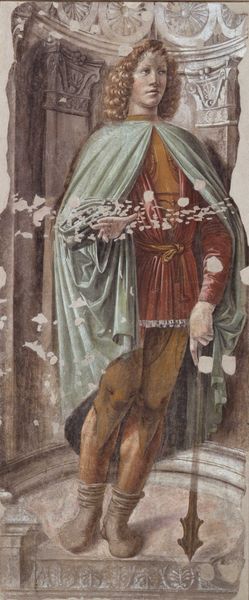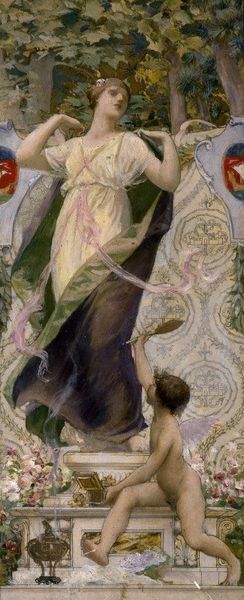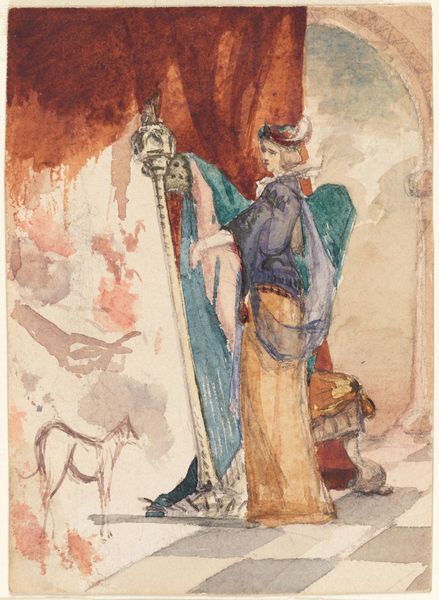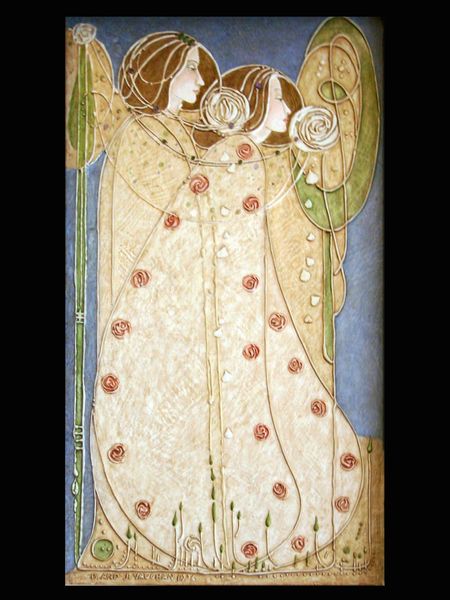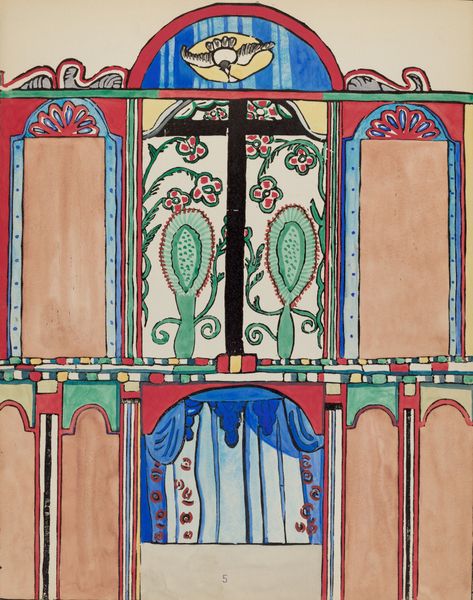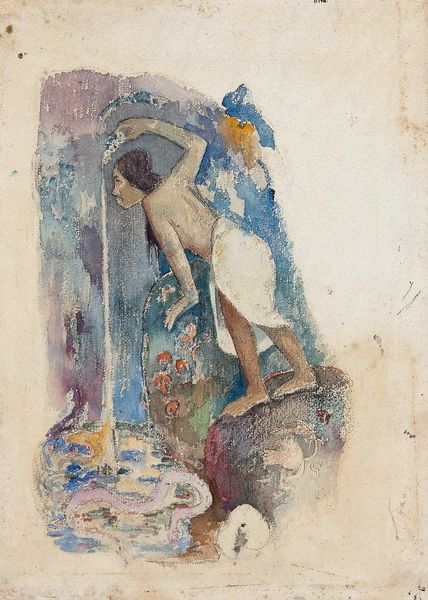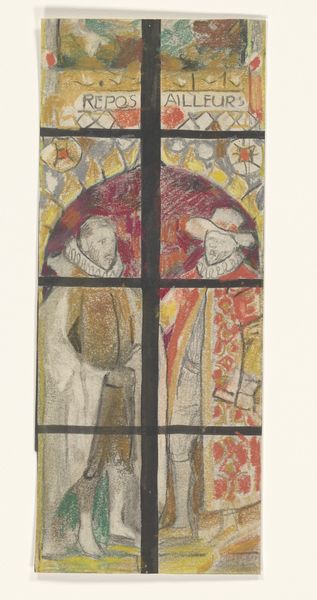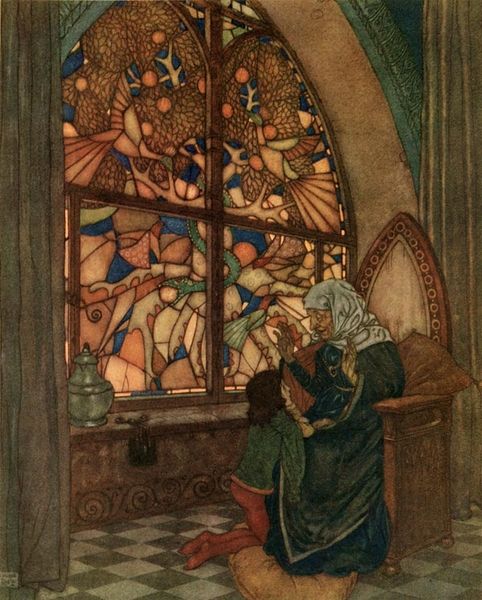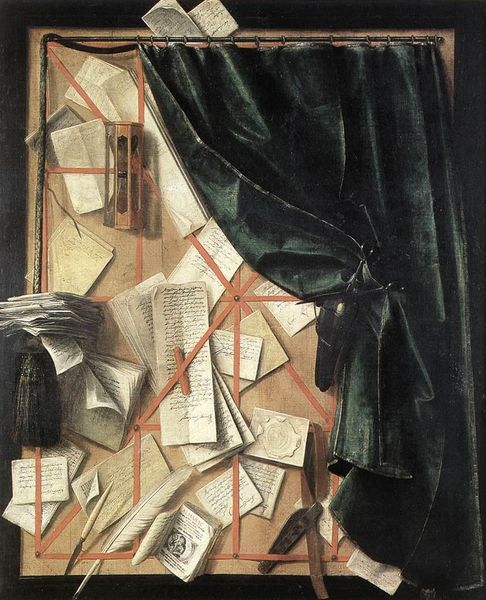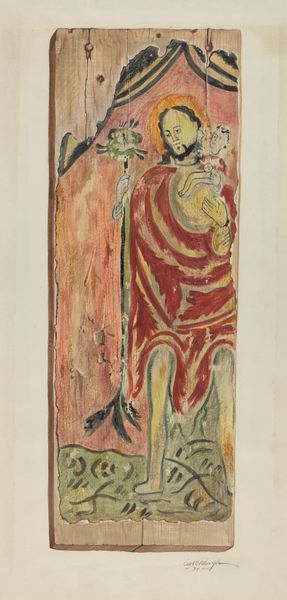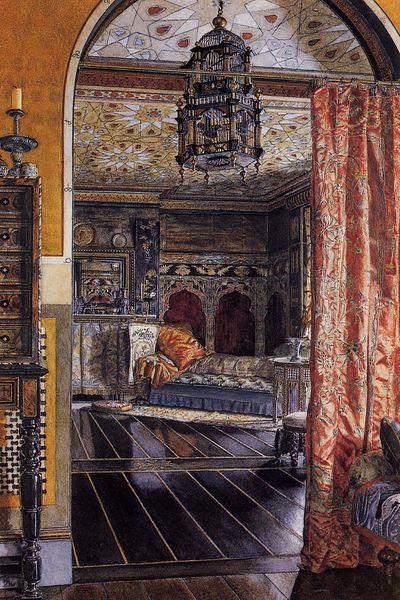
textile, watercolor
#
impressionism
#
textile
#
oil painting
#
watercolor
#
mixed media
#
watercolor
Copyright: Public domain
Paul Cézanne created this watercolor study of curtains in France, using paper and pigment. Cézanne’s choice of watercolor, typically associated with preliminary sketches, is fascinating. It allows him to capture the ephemeral quality of light and shadow, transforming fabric into a play of translucent planes. The curtains themselves, with their intricate patterns and tasseled edges, suggest a domestic interior, a space of comfort and privacy. Consider the labor involved in the production of such textiles, the weaving and dyeing processes, often performed by anonymous hands. Cézanne elevates these everyday objects to a subject worthy of artistic attention, blurring the lines between the fine arts and the decorative arts. By focusing on the material qualities of the curtains – their folds, textures, and colors – Cézanne invites us to contemplate the social and cultural significance embedded within them. It is through this careful attention to material and making that we can fully appreciate the depth and complexity of Cézanne's artistic vision, and what is typically deemed 'craft'.
Comments
No comments
Be the first to comment and join the conversation on the ultimate creative platform.
